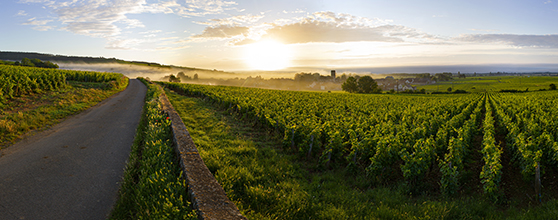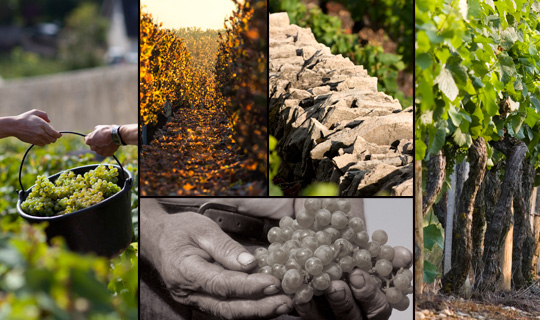
Take a trip into the very DNA of Bourgogne wines. The Climats are unique in the world, inscribed on the UNESCO World Heritage List in July 2015. With a history dating back 2,000 years, the Bourgogne region has flourished thanks to human experience, including observation of the soil and local micro-climate. This has resulted in a patchwork of these Climats, each with its own recognized and identified qualities. But what are the Climats? And from where do they take their characteristic names?
This part of the website is inspired by different sources that we invite you to explore. We found the book, “Climats et lieux-dits des grands vignobles de Bourgogne : Atlas et Histoire des Noms de Lieux” by Marie-Hélène Landrieu-Lussigny and Sylvain Pitiot particularly helpful.
► Definition of Climats and lieux-dits
Climats, clos, and lieux-dits – find out what these terms mean and how they are used in the classification of Bourgogne wines.
What is a Climat and what is the etymology of their names? Find out all the answers to your questions and much more besides !
► Towards World Heritage status
The Climats offer a unique landscape and heritage, and bear witness to some exceptional expertise. This is why the Climats of Bourgogne region were added to the UNESCO World Heritage List in July 2015, illustrating the importance of preserving this key part of Bourgogne history.
There are plenty of themed trails to follow, on foot, by car, or even by bicycle, allowing you to explore different parts of the Bourgogne region, visit cellars, and sample the area’s iconic wines.
